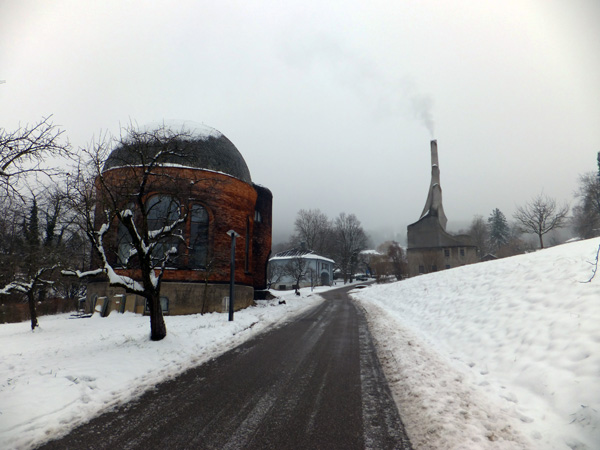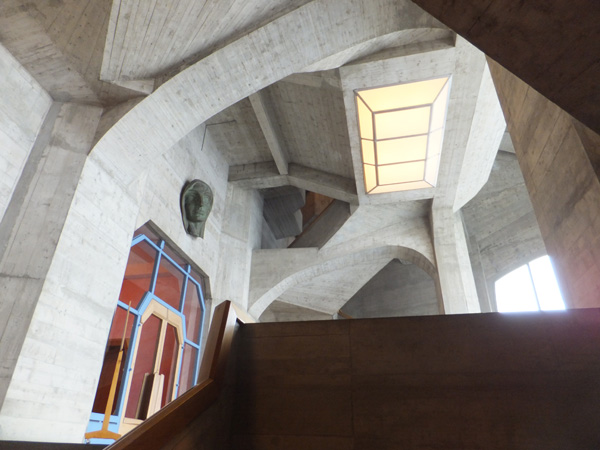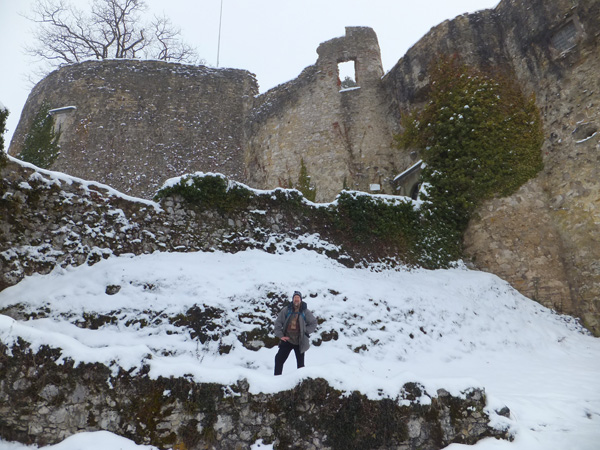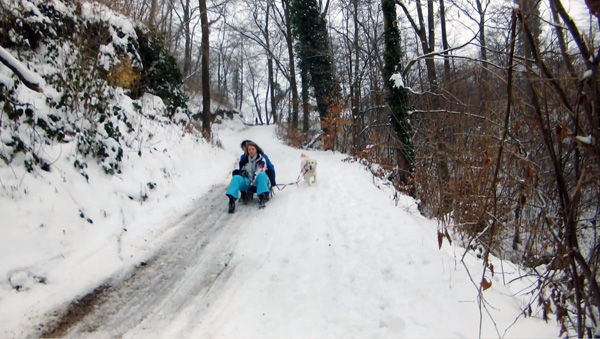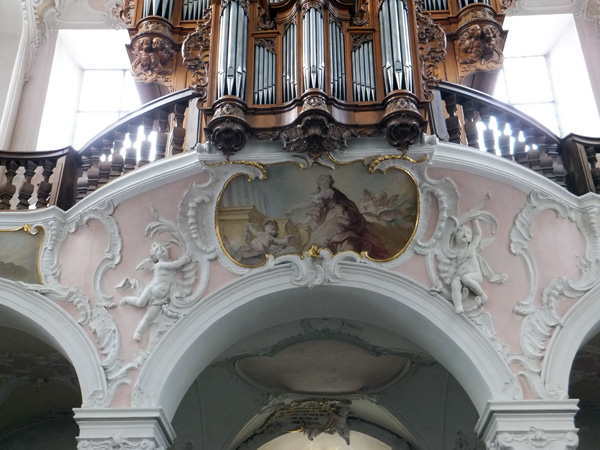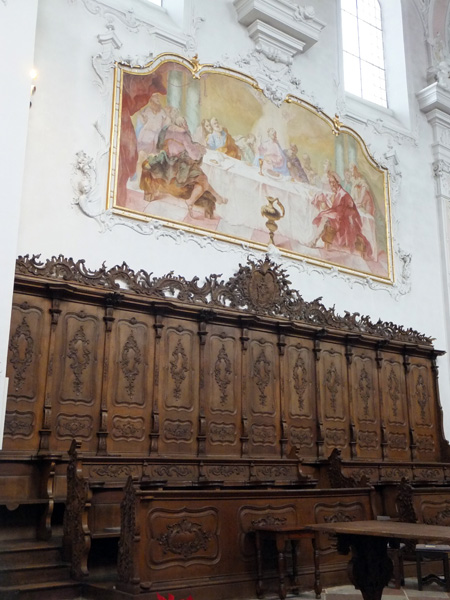Winter is a mixed blessing. We rather enjoy the loveliness: snow here seems always to be soft and fluffy, clinging to trees, and the streets never seem to accumulate the dirty slush that I remember from St. Louis, I suppose because there are fewer cars and the snow often melts after a few days and then a few days later we get a fresh coating.
Our friends Bruce and Susan, back in Lake Shastina, recommended to us the little town of Dornach which they had once visited. Yesterday the Dornach Symphony was to play at the Goetheanum there, so despite cold and snow we planned our day around that.
A little history: Rudolf Steiner (who started anthroposophy and whose work is the inspiration behind Waldorf Schools and biodynamic farming) designed and built a wonderful structure in Dornach, The Goetheanum. Begun in 1913 and completed in 1919, this was the home of the Anthroposophical Society and its primary performance venue. That one was destroyed by arson Dec.31, 1922. A new one was built, this time mostly of concrete. Due to its presence, many anthroposophists moved to Dornach where they built homes in the “Steiner-style”. As you walk through the town, you go by what were once very unconventional (for Switzerland) houses. While they do not seem unusual to the modern eye, they definitely look more interesting and friendly than more rigidly right-angular houses.
The train ride from Gumligen to Dornach is 1 hour 40 minutes with 2 changes. For us, now familiar with both of the train stations where we needed to change (Basel and Bern) this was easy. We know to take something to read; we know we’ll be warm and comfortable. Arriving in Dornach and getting our bearings (all our destination points were programmed into our GPS), we headed up to see the Goetheanum. Up being the key word. A few slips on icy walkways, but no tumbles, and it was easily found. Outside it is imposing, but it seemed institutional with its massive concrete walls and mostly small windows. Inside, unusual angles and curves proved interesting and vari-colored walls warmed the look. We saw photos and models of the 1st Goetheanum and wondered why, as beautiful as it had been, Steiner’s second design was so much less graceful.
We then hiked further uphill to the ruins of Dorneck Castle. As is common practice, it was built on a high and rocky promontory. Much of the exterior wall remains, though the inside is closed to visitors in winter. Footprints in the snow led us around the building, but we missed the same turning of the path as someone before us, and had to climb the hillside a bit. For me it felt like the 1st time in weeks I needed to use my whole body, hauling myself up with tree branches.
Continuing our walk, we skirted a horse farm, watched lots of sledders enjoying the hillsides, and made our way to the Hermitage, a landscaped park from 1785. We were a bit cold and tired by now, so we didn’t try circumnavigating its 3 lakes in the snow or climbing to Schloss Birseck, a partially-restored palace.
Our last stop was the Arlesheim Cathedral. Erected in a mere 2.5 years, it has a simple enough exterior, but the inside is pure Baroque candy: dozens of plaster cupids and flower garlands, more pink than one expects in a church, carved choir stalls, and marble altars and pillars.
Proceeding again to the Goetheanum, we paused in their café for sustenance, and then heard the delightfully well-executed concert by the Dornach Symphony.
With more than half an hour until the next train, we extended our day out with dinner in the only available restaurant, The Pergola. We’ve been in Switzerland a while now and we think we’re used to the high prices, but a cup of cooked pasta with a little sauce for 22 Francs? Worse than Bern!

